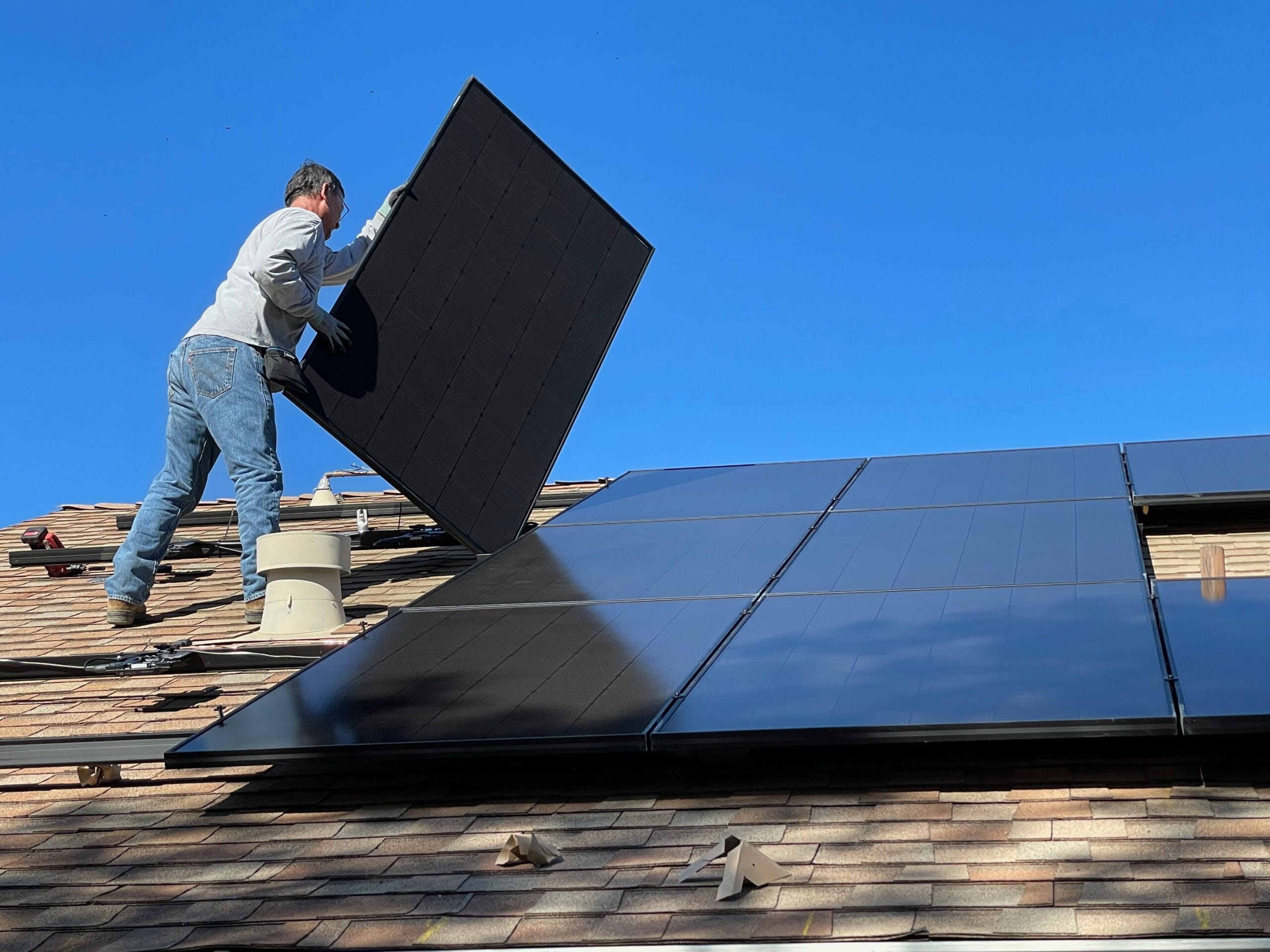Just as Archimedes harnessed the power of the sun to set enemy ships ablaze, we too can tap into this abundant energy source – but for a much more peaceful and environmentally friendly purpose: heating our water.
If you’ve ever been curious about how solar hot water systems work, you’re in the right place. I’ll be diving into the technical details, from the basics of solar energy to different types of solar water heating systems.
We’ll explore the crucial role of solar collectors and delve into how heat transfer fluids function. You’ll learn about heat exchange processes, storage options for heated water, and even get some tips on maintenance and system efficiency.
As we face increasing environmental challenges, understanding these renewable energy technologies becomes all the more important. So let’s shed some light on this bright idea!
Also see our article on problems with solar hot water systems.
Key Takeaways
- Solar hot water systems convert sunlight into thermal energy.
- There are two main types of solar water heating systems: active and passive.
- Solar collectors absorb sunlight and transfer thermal energy to heat water.
- Regular maintenance and efficiency checks are important for system longevity.
The Basics of Solar Energy
The solar renewable revolution is a big part of the solution to our energy needs and environmental concerns. Solar innovations have made it possible to capture and convert sunlight into thermal or electrical energy, providing a sustainable way to heat water and power homes.
The benefits of solar are many. For one, it contributes to energy independence, reducing reliance on fossil fuels and foreign oil. Secondly, it has a minimal environmental impact compared to traditional forms of electricity generation. Solar panels don’t emit harmful greenhouse gases or pollutants during operation, making them a cleaner alternative for our planet.
Harnessing this form of renewable energy also drives economic growth by creating jobs in manufacturing and installation sectors. Also, the cost of solar technology continues to drop while efficiency increases – thanks largely due to ongoing research and development efforts. Also see our article on hydrogen energy.
So yes, using solar isn’t merely soaking up some sunrays – it’s participating in an environmentally-conscious movement towards cleaner living and self-reliance in power production.
Different Types of Solar Water Heating Systems
Well, if you thought there was just one type of system for harnessing the sun’s power to heat your bath, you’re in for a surprise.
There are actually two main types of solar water heating systems: active and passive. Active systems use pumps and controllers to circulate water or heat-transfer fluid in the system, while passive ones rely on natural convection.
Understanding these types can affect your system costs and installation process. For instance, active systems tend to be more expensive but they’re also more efficient; they’ll pay for themselves faster due to lower running costs. On the other hand, passive systems are cheaper and simpler to install with fewer moving parts which increases their system lifespan.
Each type has its own climate impact too. Active systems have a smaller carbon footprint because they use less energy overall. However, both types significantly reduce reliance on fossil fuels thereby contributing positively towards environmental sustainability.
Retrofitting possibilities also exist here, particularly with active systems that can be incorporated into existing hot water setups pretty easily. Passive ones may require more extensive changes but they’re often worth considering because of their durability and simplicity.
Before making decisions though, it’s important to understand local regulations and incentives that could influence your choice in favor of solar energy.
The Role of Solar Collectors
Let’s dive into the fascinating world of solar collectors, a key component in harnessing and converting the sun’s energy into usable heat. These devices play an essential role in solar hot water systems by absorbing sunlight and transferring that thermal energy to heat your water. Typically, these are known as the humble solar panel.
- Collector positioning: The collector should be positioned at an angle where it can capture maximum sunlight throughout the year. This position varies depending on geographic location.
- Material selection: Materials with high absorptivity, like blackened metals or specialized solar absorbing paints, are commonly used to maximize efficiency.
- Collector insulation: Proper insulation prevents heat loss from the collector back into the environment, ensuring more efficient operation.
- Glazing techniques: Glazing can enhance performance by trapping heat within the collector while allowing sunlight to enter.

Performance monitoring is also crucial for maintaining optimal functionality of these components over time – regular checks help detect any issues early on so they can be rectified promptly.
Understanding how each element works together informs our choices when designing or selecting a system, ultimately leading us towards a greener future. It’s clear that every detail matters when it comes to utilizing this abundant and renewable energy source effectively!
How Heat Transfer Fluids Function
In the thrilling dance of energy conversion, heat transfer fluids play a starring role, transporting captured warmth from solar panels to where it’s most needed. Let’s dive deeper into how these crucial components function.
My focus here is on fluid types comparison and their environmental impact. Typically, propylene glycol and water are the most commonly used heat transfer fluids in solar hot water systems. While propylene glycol offers superior freeze protection, it can’t compare with water’s natural abundance and cost-effectiveness.
Environmental considerations draw me towards water as well. Glycols require careful disposal due to their potential for environmental harm if released irresponsibly. Yet, both choices demand safety precautions during installation and maintenance to prevent leaks or overheating.
The longevity of these fluids also plays a part in our discussion. Propylene glycol tends to have a longer lifespan than water but requires regular checks for acidity levels – adding maintenance costs over time. On the flip side, while water may need more frequent replacement, its minimal impact on your wallet might sway your decision.
Considering all factors – fluid type characteristics, environmental impact, safety precautions, fluid lifespan – I find that each option has its merits depending on individual requirements and values when performing a cost-effectiveness analysis.
The Process of Heat Exchange
Active systems use pumps to actively circulate heat transfer fluid through collectors and storage tanks. They’re efficient, but they also require more moving parts and maintenance.
Passive systems don’t need these extra components or maintenance because they rely on natural convection currents for circulation; it’s all about working smartly with nature rather than against it.
Heat pumps are the special forces within our ranks – they transfer heat from one place to another by circulating a substance called a ‘refrigerant’ through a cycle of evaporation and condensation. It’s like having your own personal teleporter for heat!
Storing Heated Water
Having delved into the intricacies of the heat exchange process in solar hot water systems, it’s now time to explore where this heated water goes. Specifically, let’s talk about how and where it is stored.
The choice of water tank materials plays a crucial role here. Stainless steel and glass-lined tanks are popular choices due to their corrosion resistance and durability – key longevity factors for any solar hot water system. Additionally, these materials can withstand high temperatures, aiding in efficient temperature regulation.
But it’s not just about choosing the right material; insulation techniques are equally vital. Properly insulated tanks reduce heat loss significantly, ensuring that your hot water stays hot for longer periods. This is an aspect that resonates deeply with my environmentally-conscious mindset because less energy waste equals fewer carbon emissions.
Space requirements also come into play when considering storage solutions. Tanks come in various sizes to suit different needs and space constraints, so you’ll need to consider your household’s daily hot water usage when deciding on a suitable size.
So there you have it: storing heated water isn’t as simple as it might initially seem. It involves careful selection of materials, effective insulation methodologies, consideration for space limitations, and keen attention towards longevity factors to ensure optimal functionality over time.
Check our our review of the Chromagen solar hot water system.
Maintenance and Efficiency of the System
You’ve got your system set up and storing hot water adeptly, but don’t overlook the importance of regular maintenance and efficiency checks to keep everything running smoothly. System longevity can hinge on preventative measures taken through regular servicing.
I strongly advise scheduling professional check-ups to ensure efficiency optimization. A good service will assess all components, from the solar panels to the storage tanks, ensuring they are functioning as effectively as possible.
Here’s an example of what a typical solar hot water system maintenance checklist might look like:
| Checks | Benefits |
|---|---|
| Solar Collectors inspection | Maximizes heat absorption |
| Storage tank assessment | Prevents leaks or damages |
| Pump and controller evaluation | Ensures optimal operation |
| Heat transfer fluid examination | Maintains efficient heat exchange |
A cost effectiveness analysis should also be part of your routine. By comparing energy savings with maintenance costs, you’ll have a clear picture of whether your solar hot water system is paying off in the long run. Make sure to consult your power bill and energy company.
Do remember that while this might seem like extra work initially, it can save you significant time and money down the line by preventing major issues before they occur. In essence, maintaining a well-oiled machine is key to harnessing the sun’s power for our daily needs responsibly and sustainably.
Frequently Asked Questions
What is the initial cost of installing a solar hot water system?
While installation financing varies, the initial cost for a solar hot water system can range from $3,000 to $7,000. Factors like maintenance costs, system sizing and brand comparison also affect price. It’s an eco-friendly choice too!
How long does a solar hot water system last before it needs to be replaced?
With diligent system maintenance, your solar hot water system can last 20-25 years before needing replacement. Component durability, installation expertise and system upgrades factor into this. Always check the warranty period for assurance.
Are there any government incentives or rebates available for installing a solar hot water system?
Yes, federal policies offer tax credits for solar hot water systems. Rebate eligibility varies by location and system type. Local incentives may also be available. I’d recommend researching and completing an incentive application promptly.
Can a solar hot water system provide enough hot water for my entire household?
Just like a well-tuned orchestra, my solar hot water system capacity harmonizes with daily usage and seasonal variations. Even on cloudy days, backup options ensure continuous supply. Regular maintenance keeps the symphony playing smoothly.
How does weather affect the efficiency of a solar hot water system?
Seasonal variations greatly affect solar hot water systems. Sunlight exposure is key; less in winter, more in summer. Cloud cover impact and temperature influence efficiency too. Also, regional differences play a part in system performance.
Conclusion
In the end, it’s clear as day: harnessing the sun’s mighty power to heat our water is nothing short of magic. It’s a clever dance between solar panels, heat transfer fluids, and heat exchangers that makes this miracle possible.
And with a little maintenance, these solar systems can outlast even the sturdiest of dinosaurs! So here’s to being green while enjoying steaming hot showers, thanks to our fiery friend in the sky!




